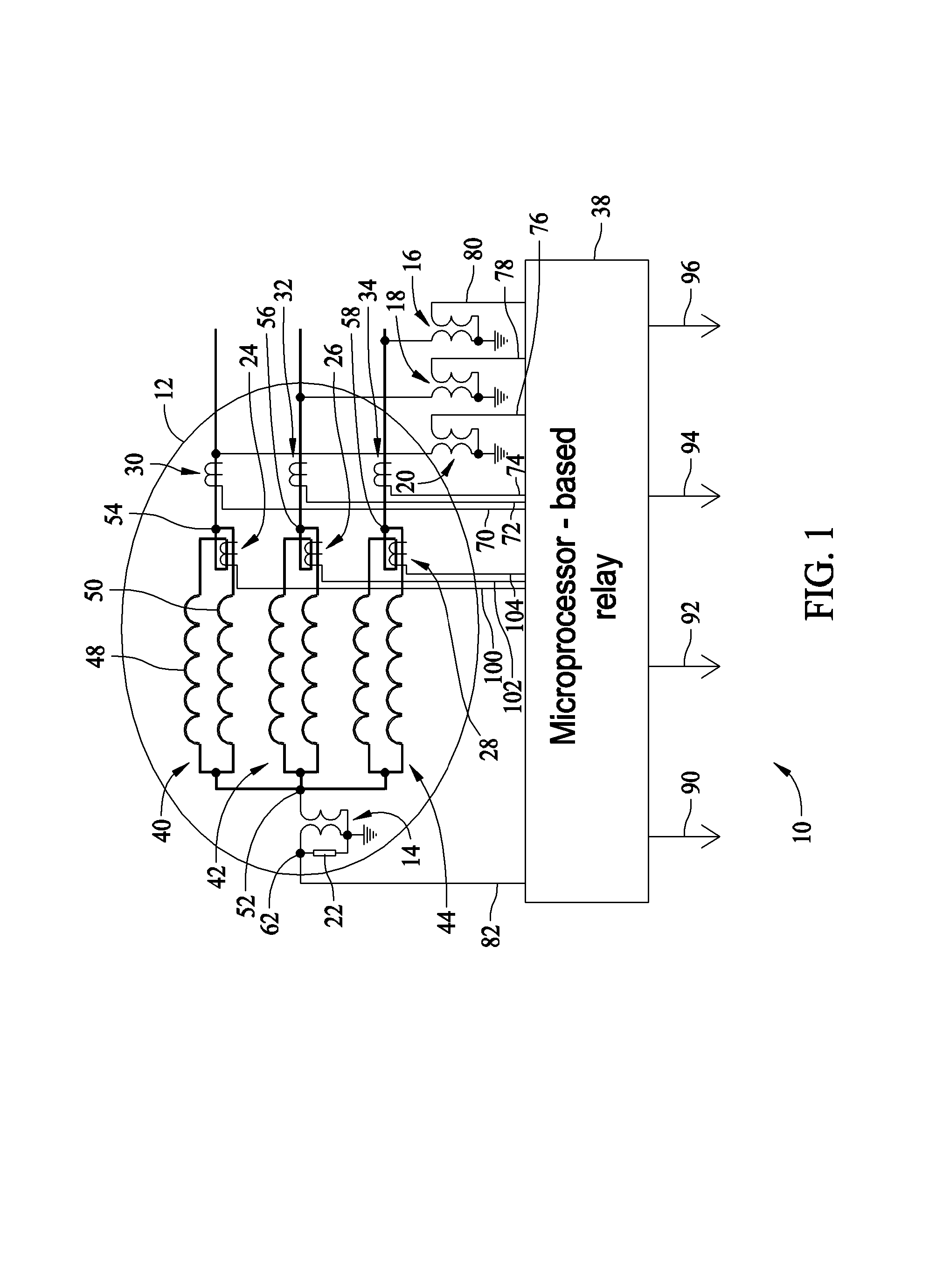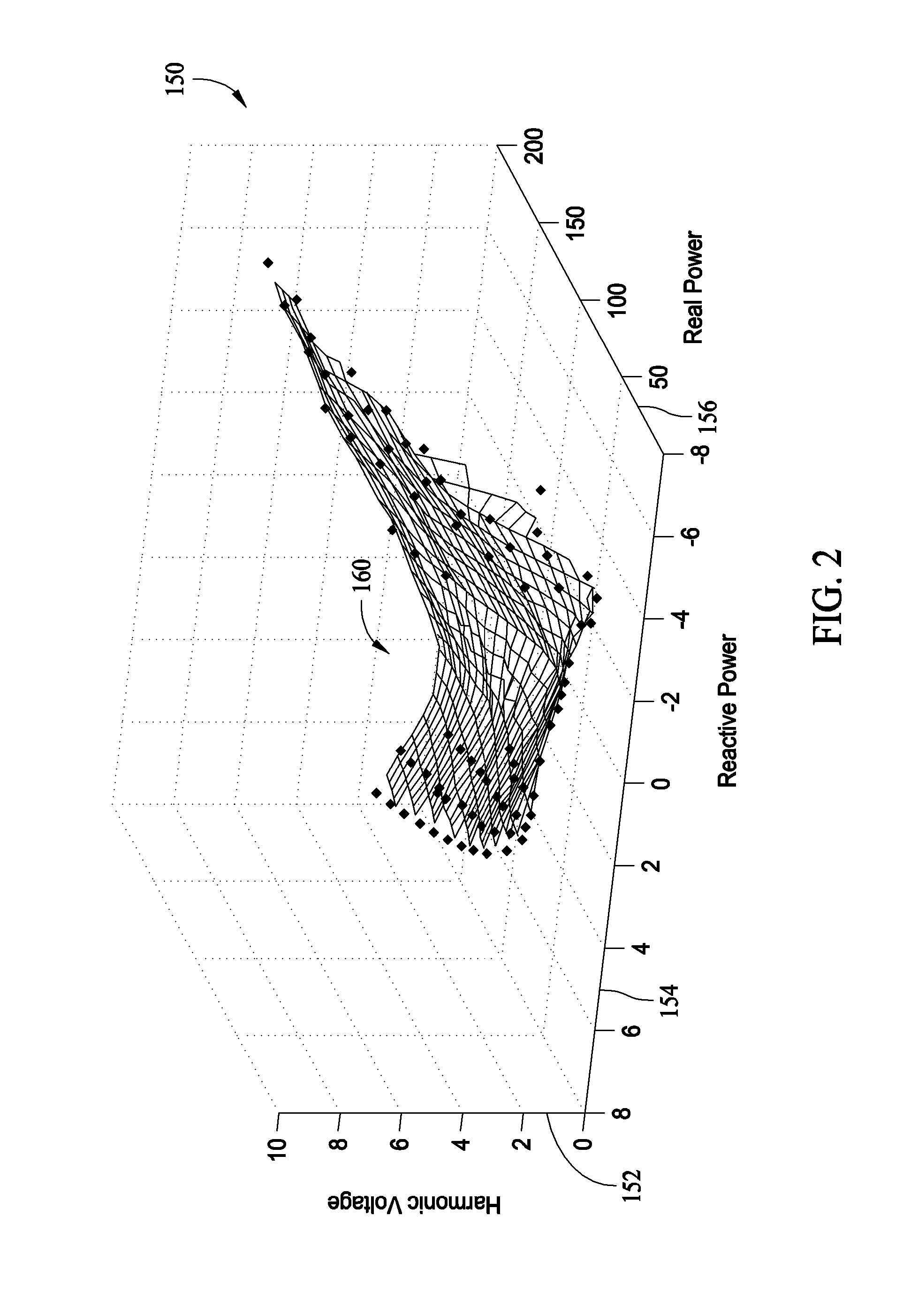Generator protection methods and systems self-tuning to a plurality of characteristics of a machine
a generator and plurality of characteristics technology, applied in the direction of testing circuits, instruments, spectral/fourier analysis, etc., can solve the problems of rapid escalating damage of the generator, higher the repair cost, and longer the subsequent repair time and cos
- Summary
- Abstract
- Description
- Claims
- Application Information
AI Technical Summary
Benefits of technology
Problems solved by technology
Method used
Image
Examples
Embodiment Construction
[0020]The systems and methods for determining an occurrence of a short-circuit represent a magnitude of a harmonic in a two-dimensional plane of an active power and a reactive power output by a generator. Good accuracy in modeling an expected harmonic is achieved by using an active and reactive power of the generator. For a given combination of active and reactive power, normal changes in all other operating points of the generator have no or minimum impact on an amount of a harmonic.
[0021]First, the method for determining an occurrence of a short-circuit self-tunes to the generator by generating a weighted average of a plurality of harmonic values for a given active and reactive power point. With passing of time, as the generator is run at various active and reactive power values, more and more active and reactive power points are recognized by the method for determining an occurrence of a short-circuit. For each point, an expected harmonic is found. When the method for determining...
PUM
 Login to View More
Login to View More Abstract
Description
Claims
Application Information
 Login to View More
Login to View More - R&D
- Intellectual Property
- Life Sciences
- Materials
- Tech Scout
- Unparalleled Data Quality
- Higher Quality Content
- 60% Fewer Hallucinations
Browse by: Latest US Patents, China's latest patents, Technical Efficacy Thesaurus, Application Domain, Technology Topic, Popular Technical Reports.
© 2025 PatSnap. All rights reserved.Legal|Privacy policy|Modern Slavery Act Transparency Statement|Sitemap|About US| Contact US: help@patsnap.com



